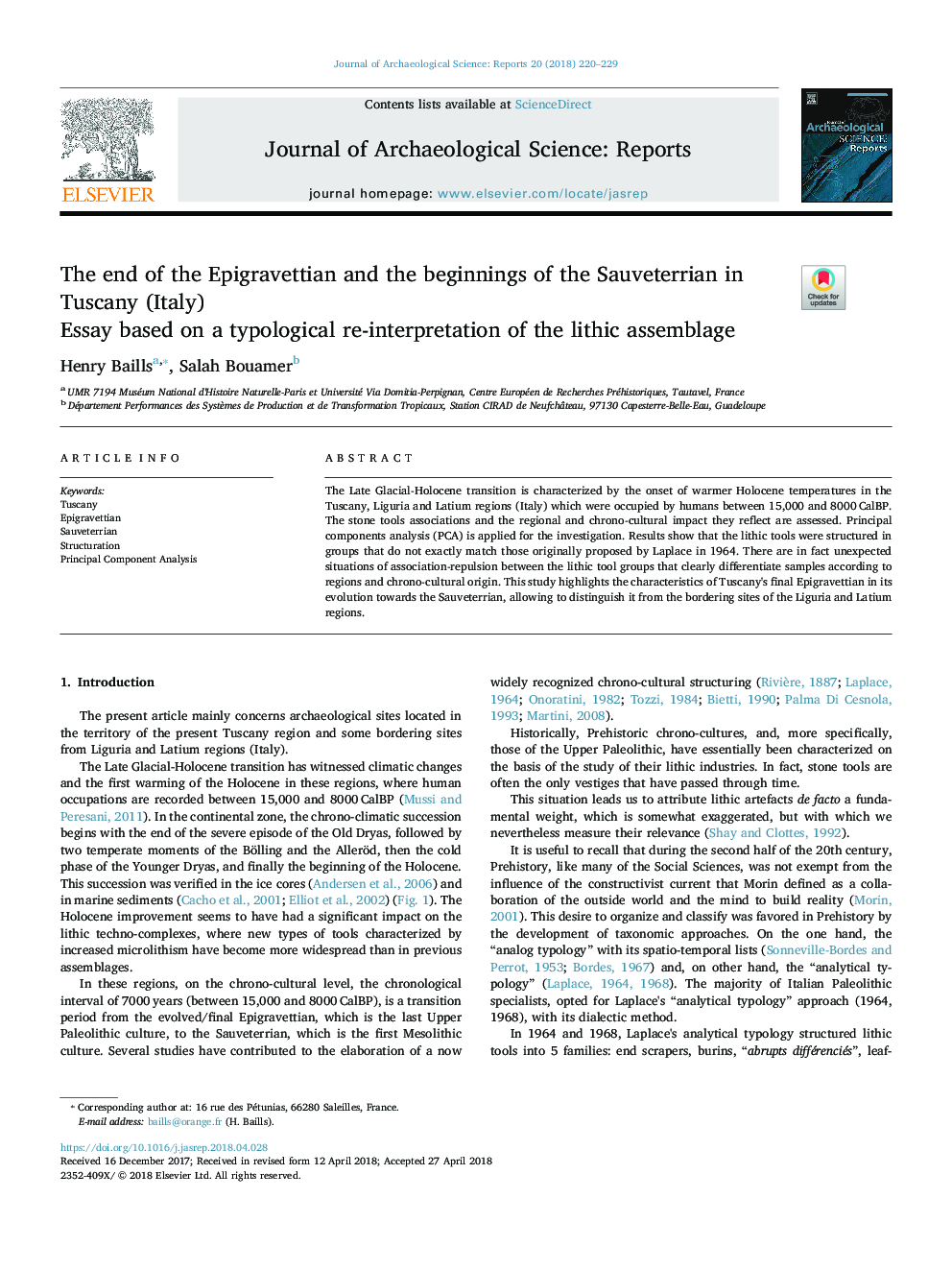| Article ID | Journal | Published Year | Pages | File Type |
|---|---|---|---|---|
| 7444289 | Journal of Archaeological Science: Reports | 2018 | 10 Pages |
Abstract
The Late Glacial-Holocene transition is characterized by the onset of warmer Holocene temperatures in the Tuscany, Liguria and Latium regions (Italy) which were occupied by humans between 15,000 and 8000â¯CalBP. The stone tools associations and the regional and chrono-cultural impact they reflect are assessed. Principal components analysis (PCA) is applied for the investigation. Results show that the lithic tools were structured in groups that do not exactly match those originally proposed by Laplace in 1964. There are in fact unexpected situations of association-repulsion between the lithic tool groups that clearly differentiate samples according to regions and chrono-cultural origin. This study highlights the characteristics of Tuscany's final Epigravettian in its evolution towards the Sauveterrian, allowing to distinguish it from the bordering sites of the Liguria and Latium regions.
Related Topics
Social Sciences and Humanities
Arts and Humanities
History
Authors
Henry Baills, Salah Bouamer,
